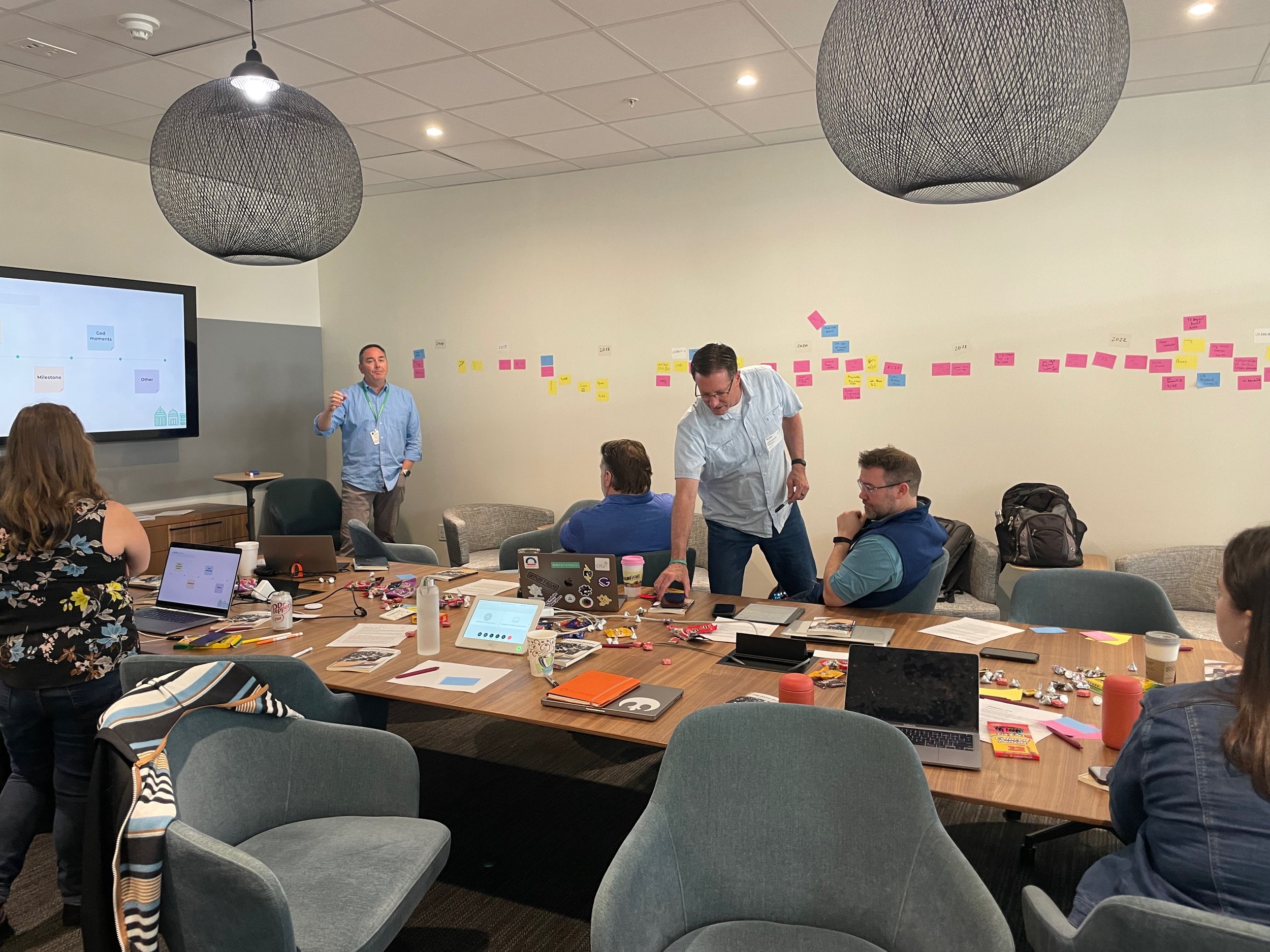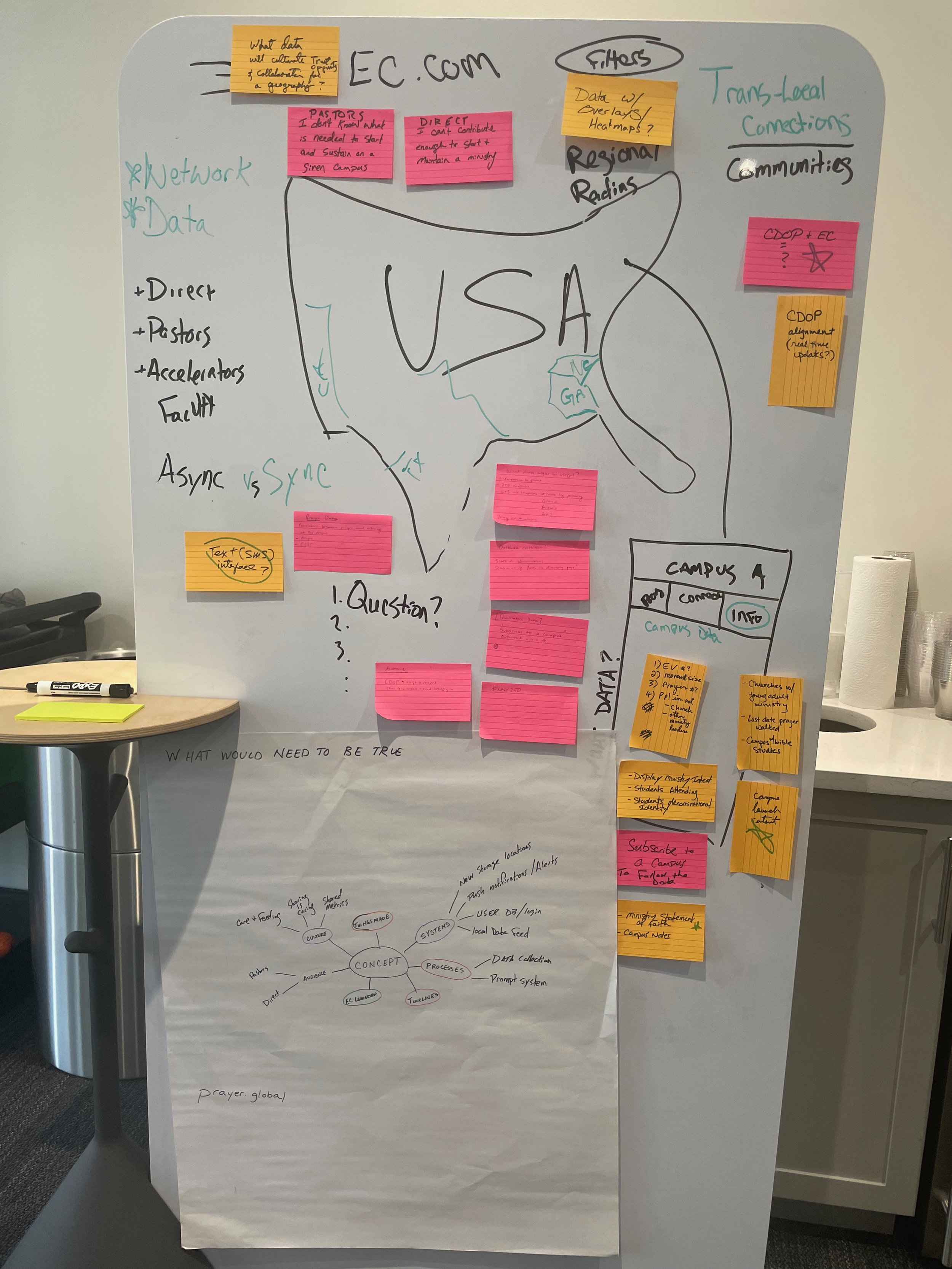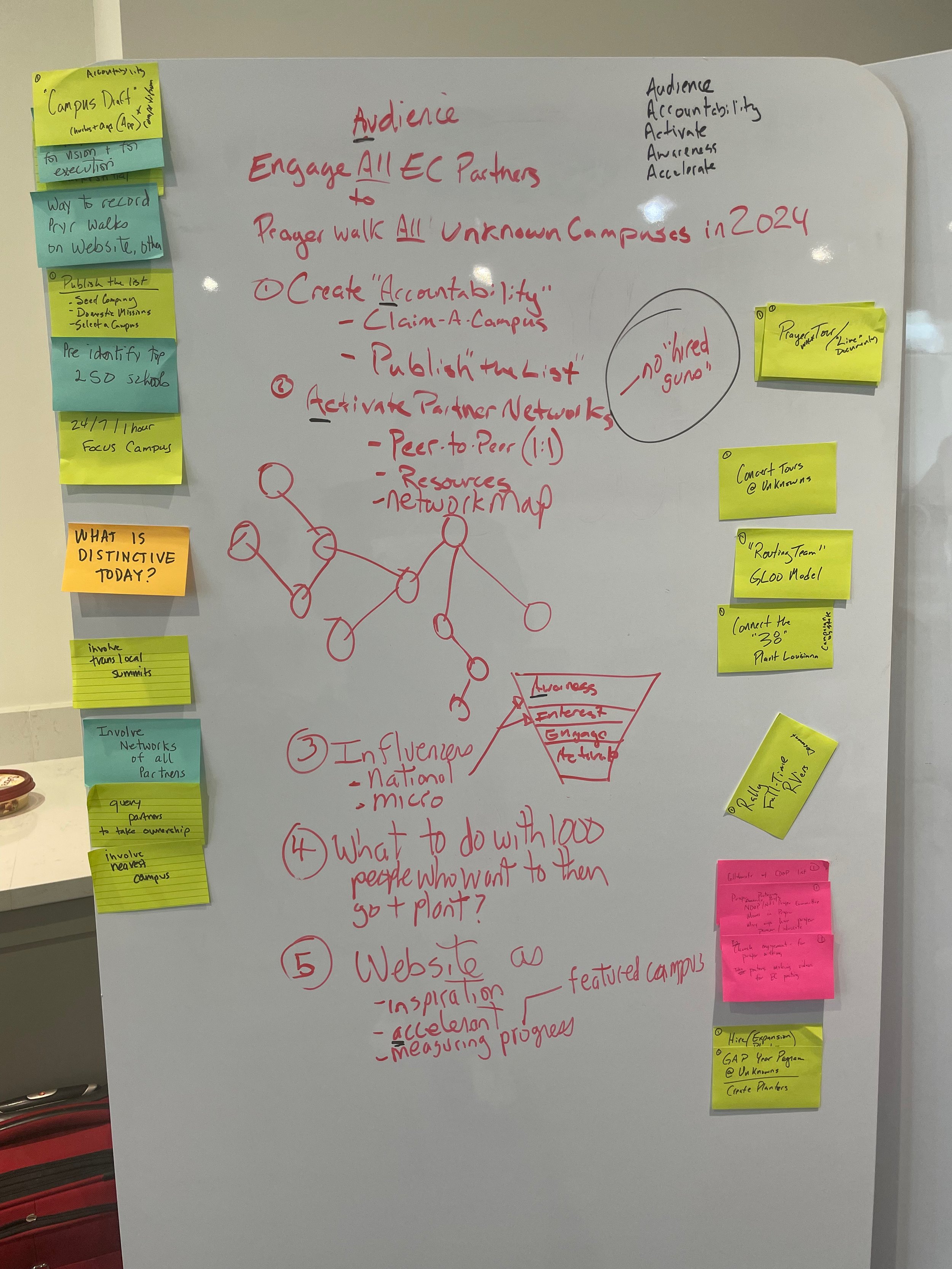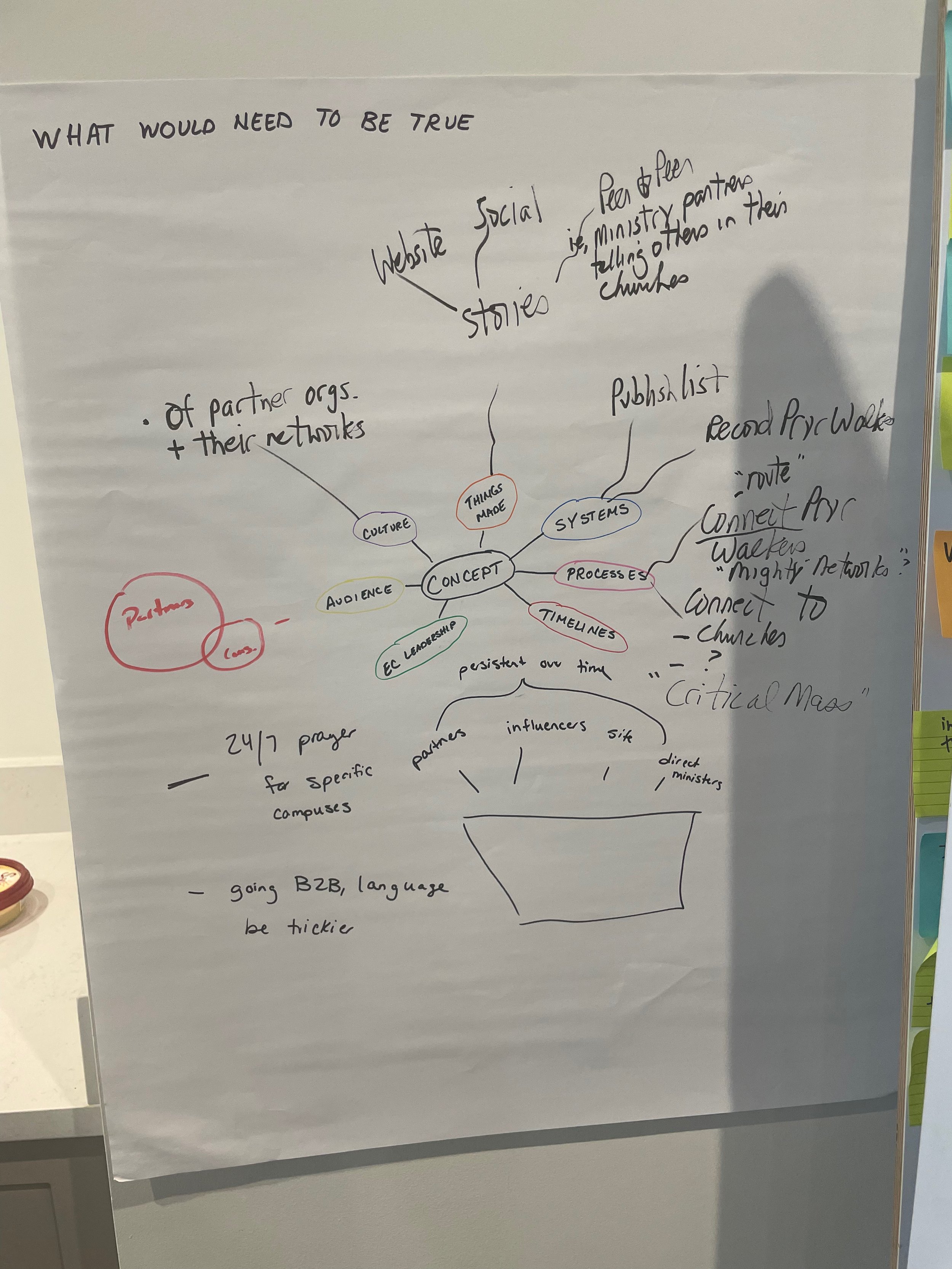
Strategic Meeting Design
The Challenge: Every Campus, a coalition of campus ministries, was revamping its strategy and in just 2 days bring all their vendor partners along.
The Goal: Design and facilitate 2 days of meetings so that the Every Campus leadership and vendor partners are aligned and ideating together on the future.
My Role: Facilitator
Discovery
Meeting Design is Design
While the interior activities are a little bit different, you can follow a similar design arc:
Discover — find out participant needs and goals, learn about prior meetings, etc.
Design — Start building the meeting agenda and exercises.
Develop–produce the slides, materials needed, etc.
Deliver — facilitate the meeting!
Discovery Questions
While I wasn’t able to meet with everyone on the Every Campus Steering Committee (more on that later), with who I was able to meet, I asked questions around these areas:
People– “Who’s in the room? What are they like? What power/gender dynamics are there? How familiar is everyone with each other? What do they care about?”
The journey — “What’s brought you to this moment? What’s next that these meetings need to build towards?”
Success — “At the end, what is the one thing you hope these meetings will accomplish?”
Previous meetings– “What did [previous facilitator] do well? “What has been a flop before? Are there landmines between groups or relationships to be aware of?”
Practical– “Who is getting food? What is the room like that we will be in? How much time do we have?”
Insights
Most of those participating were new to EveryCampus and new to each other — the vendors had switched out some of the persons on this account.
It is not a small thing for these operational partners to come out — one was flying in from Hawaii!
There was a tension to hold that ideas at this meeting wouldn’t necessarily go forward– the next set of meetings would be to gather ideas from field experts and then a third meeting would be held to bring the sets together to form a cohesive plan.
After reviewing, I could see that the the original meeting design–which was to give each operational partner 2 hours to share what was new in their industry, wouldn’t do everything the Steering Committee needed during this valuable (and frankly expensive) time, so we agreed I would totally rewrite the meeting design.
Design
After discussing what was currently designed and what they hoped for, we had a new set of goals that I designed against:
Strengthen working relationships
Strengthen the connection to EveryCampus
Hearing about new industry capabilities
Generating ideas and what it would take to execute those ideas from
Detailed Agenda
I started putting together a very detailed agenda so that the Steering Committee would know exactly what to expect:
the time for an activity
what the outcome was
who would be leading it
how it worked
what supplies were needed
If you’re just starting out on designing strategic interactive meetings. I highly recommend the books Sprint for a recipe to start with and then Gamestorming to expand your set of activities.
Building up my database of activities and their use cases has been probably my single greatest asset as a facilitator.
Deliver








“AMAZING job keeping all of us on track!”
“Fun, creative, and centered facilitation.”
“Ran a damn fine workshop. Good content, pacing, confidence, and insights.”
“THANK YOU for leading. We got more done today than in most meetings.”
Final Thoughts
Over the years of facilitating I’ve learned a few pro-tips I want to leave you with:
Encourage them and help them think: Many don’t think of themselves as naturally creative or “ideators” — but they can if given some helpful practical handholds. This is my thinking prompt sheet to help expand the imagination.
Make things clear: Always provide an example of the outcome you’re looking for — if you want people to make a wireframe, show them what it is, and be open to them creating other options like a magazine cover, or a narrative story.
Be ready to improvise: Plan 30-minute breaks every 90 minutes both for your participants to take a breather and more importantly, for you to huddle with a decision maker to get live feedback and make adjustments on the fly. Ask repeatedly, “Is this heading in the right direction? What’s happening in the room?” You may not be able to tell because you’re busy facilitating.
